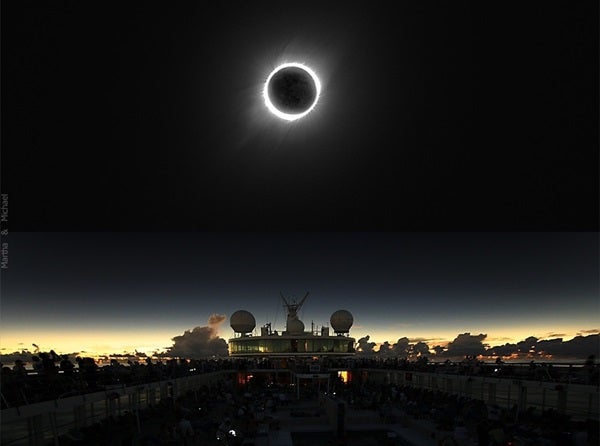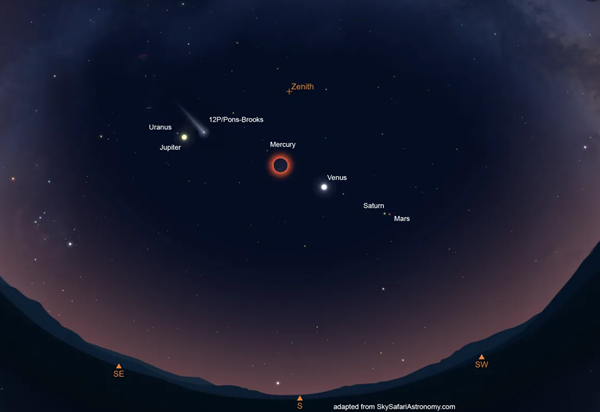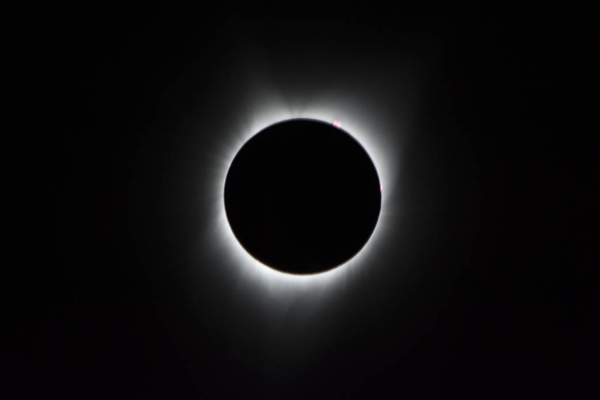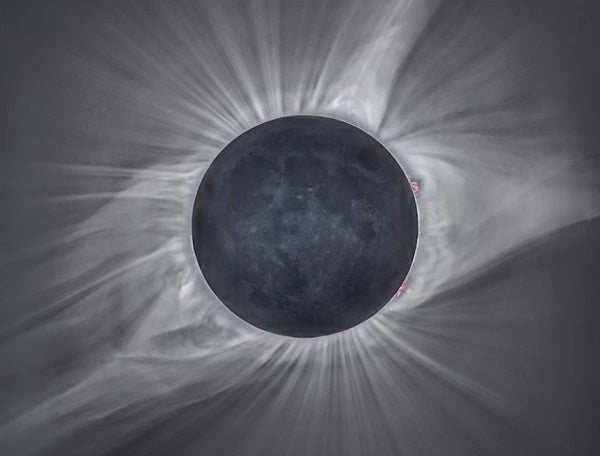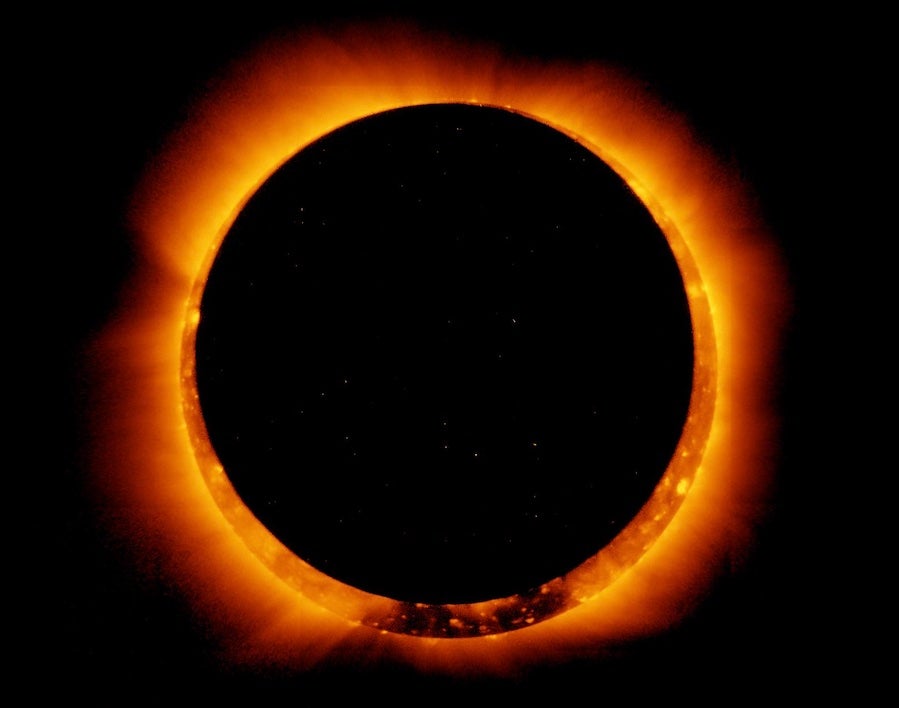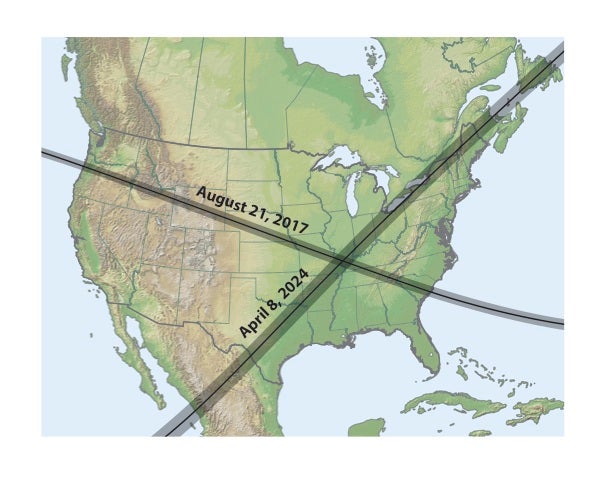The brightness story begins with photons, the universe’s most abundant objects. Contrary to popular belief, photons have neither luminosity nor color. They are magnetic and electrical pulses. You can’t see magnetism and you can’t see electricity. So when no one’s watching, garden roses are not red, nor is grass intrinsically green. They’re not even black, but blank. Photons do deliver the electromagnetic force, which triggers some of our cells to respond electrically, producing the subjective perception of light. As physicist Roy Bishop says in the Observer’s Handbook from the Royal Astronomical Society of Canada, a rainbow occurs strictly inside your skull.
As you gaze at June’s vivid hues, you’re thus perceiving the inside of your brain’s occipital lobe. That’s where your brain’s 100 billion neurons are fashioning the visual universe. All brightness and color are created there. Colors exist nowhere else.
Relatively few are able to accept this. It seems too far out. A lifetime of language creates the illusion that the visual scene is external to us. So let’s move on to more comprehensible realities — like the source of those photons, the Sun itself.
Barring nuclear war, the Sun is the most brilliant thing we’ll ever encounter. A supernova is nine orders of magnitude brighter, but we’ll never see one up close, because no star in our region of the galaxy is massive enough to pop.
For the most part, the Sun’s half-degree disk is not the originator of light-photons. Rather, the innermost 1/200th of the solar globe (by volume) is the solar fusion generator. This dazzling minuscule sphere in the Sun’s exact center produces all the energy. The sharply defined outer solar layer, the photosphere, is merely where light is released. It looks crisp because it’s just a few hundred miles thick. This light-emitting layer is like a veneer, almost painted onto the solar surface.
“BARRING NUCLEAR WAR, THE SUN IS THE MOST BRILLIANT THING WE’LL EVER ENCOUNTER.”
Other suns contribute to the photon flux. Most are super-dim and orange. To the naked eye, there’s no trace of 43 of the 50 nearest stars. The night sky instead displays the oddballs, the galaxy’s lighthouses. One of the most luminous marks the Big Dog’s tail. This is Aludra. It’s so lovely, two Navy ships were named for it, as USS Aludra. But the most famous warm weather luminary is Deneb, now rising at nightfall. Each of these powerhouse stars could be as luminous as 200,000 suns — but distance plays tricks on astronomers, and both stars could be much closer, and therefore dimmer.
So assessing brightness is not easy. Nothing is obvious. Our pupils change size while our retinas photochemically alter their sensitivity. Would you guess Full moonlight is 400,000 times dimmer than sunlight? Would you ever guess that shiny white printer paper illuminated by that Full Moon is actually 2,000 times blacker than a black cat in sunlight? It’s hard to believe because Nature protects us from huge brightness changes. Our eyes cannot adequately adjust to two simultaneous scenes that have wildly different illumination. This makes brightness comparisons non-intuitive.
When telescopically studying the Sun through appropriate filters, would we ever guess that each inky black sunspot, if it could be seen on its own in the night sky, would be dazzling enough to cast shadows? Or even damage our retina?
In rural unpolluted places, would we guess that the dark, “starless” background sky’s glow is five times brighter than the combined light of all the visible stars?
Yet perceiving tiny bits of light at the very limits of our senses gives astronomers a strange satisfaction. Have you ever seen Uranus with the naked eye? Late this month before dawn, Uranus in Pisces is indeed viewable in unspoiled skies. Its 6th-magnitude glow defines the traditional lower terminus of the human visual experience, whose upper end is 9 trillion times brighter. That terminus, marked by our beloved daystar, now hovers at its annual high point, in eastern Taurus.
Happy solstice.
Contact me about my strange universe by visiting http://skymanbob.com.




